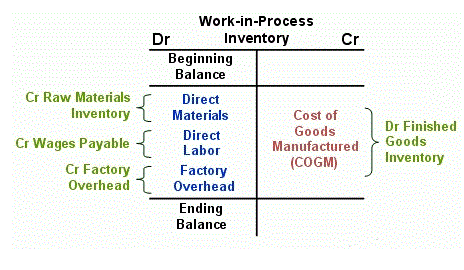
Interactive dashboards should provide drill-down capabilities, highlighting key bottlenecks and trends. Real-time tracking of close progress helps finance teams proactively address issues before they delay the final reporting. Intercompany reconciliation is essential for more effective and timely financial reporting and analysis. https://www.bookstime.com/ Below are four critical actions that one should fulfill in order to function their IC reconciliation processes properly. Cloud-based solutions offer scalability and flexibility for intercompany reconciliations.
What Is Transaction Lifecycle Management? Guide for Finance Leaders
An intercompany transaction is a financial exchange between two or more legal entities within the same parent company. For effective reconciliation, each entity’s financial data must be accessible to the other parties involved. Real-time data sharing enables entities to record, review, and approve intercompany transactions almost immediately, reducing timing discrepancies and improving accuracy.
Step 2: Transaction Identification

Trintech warns that “a lack of visibility…can quickly introduce financial risk.” Reconciliation software streamlines this workflow. It offers a central platform for efficient tracking, matching, and resolution of transactions. This not only accelerates your financial close but also bolsters internal controls, leading to a smoother, more dependable operation. Leverage customized rules and key financial controls for automated matching and reconciliation items, including intercompany transactions, within Cadency.
The role of technology in intercompany reconciliation
They can reduce the risk of discrepancies, and improve financial performance. Manual processes often lead to inefficiencies that hinder timely and accurate reconciliation. With numerous intercompany transactions, the burden of manual reconciliation also increases. This can overwhelm finance teams, and lead to increased stress and potential mistakes. An effective intercompany reconciliation process helps the business avoid double entries in more than one of its subsidiaries or divisions.

Lateral transactions happen between subsidiaries at the same organizational level – neither entity has authority over the other, but they still conduct business together. Both subsidiaries must record these exchanges and any resulting financial impact. Intercompany accounting might fly under the radar, but it quietly creates big headaches for finance teams everywhere. Intercompany reconciliation faces several challenges because of the nature of the transactions that are being reconciled.
Intercompany reconciliation is no small feat, but it’s an essential process that offers more than just compliance with regulations. These software suites tie intercompany reconciliation together different departments like finance, HR, and supply chain, creating a centralized hub for data. This makes it significantly easier to perform reconciliations, as all the data is readily accessible in one spot, and often in a standardized format.

Best Practices in Intercompany Reconciliation
That’s why it’s so important to go in with a clear head and a good understanding of your non-negotiables. This topic includes information about theintercompany reconciliation reports. By QuickBooks Accountant weaving these practices into the fabric of intercompany dealings, organizations can not only tackle the challenges of reconciliation but also pave the way for a more cohesive and efficient corporate ecosystem. By being aware of these pitfalls and actively working to avoid them, companies can ensure that their intercompany agreements are robust and serve to support, rather than hinder, their business operations.

Even if you’re managing transactions between just two or three parts of your business, manual reconciliation can quickly become a time-sink and a source of errors. Technology companies, especially those growing super fast or often involved in mergers and acquisitions, can find their internal financial setups getting complicated very quickly. With multiple product lines, different service divisions, or newly absorbed entities, the sheer number of intercompany transactions can skyrocket. Sticking with manual reconciliation in such a fast-moving environment is just asking for trouble.
Your FAQs about intercompany reconciliations answered.
Examples of intercompany accounting include sales of inventory between subsidiaries, shared service cost allocations, loans between parent and subsidiary, and the transfer of assets or funds between entities. These transactions are recorded to track internal financial activity within a corporate group. It represents amounts owed by one entity within a corporate group to another due to intercompany transactions, such as sales or loans. This account tracks the receivables within the group, ensuring proper reconciliation and financial reporting. Recording these journal entries is important for internal accounting purposes. However, these are eliminated during the preparation of consolidated financial statements to ensure that the revenues, expenses, or balances are not inflated.
- Some software solutions are highly flexible and can be customized to meet specific needs.
- That being said, intercompany payables are ultimately eliminated in the final consolidated balance sheet to avoid inflating the company’s financial data.
- Responsive, knowledgeable help is invaluable when you have questions or need assistance, making a big difference in your overall experience.
- Intercompany accounting refers to the process of recording financial transactions between two different entities that are related by the same parent company.
- For example, when Company A sells products to Company B, and both are subsidiaries of the same parent company, the transaction must be excluded from consolidated revenue and expenses.
- It eliminates discrepancies, streamlines the financial close, and ensures compliance with accounting standards.
These tools can integrate with existing ERP systems and provide end-to-end automation, real-time visibility, and advanced analytics. Intercompany reconciliations can be a major source of stress for accounting teams working with numerous entities. Centralizing intercompany data reduces redundant entries and creates a single source of truth. With centralized data, finance teams can track intercompany transactions more effectively, reducing confusion and discrepancies.



